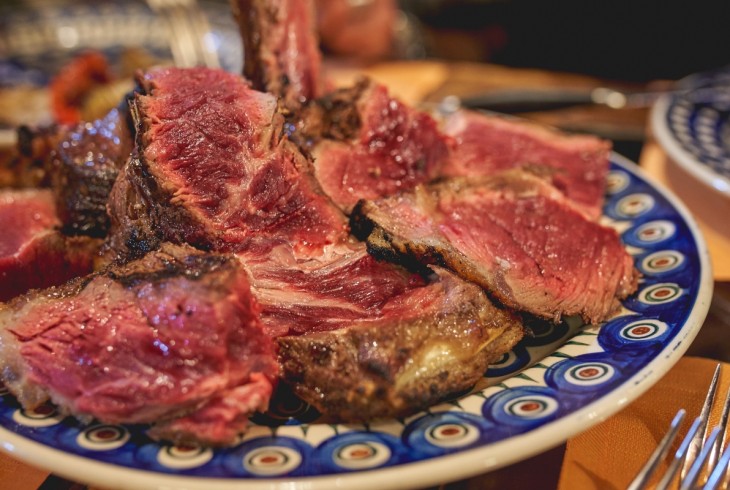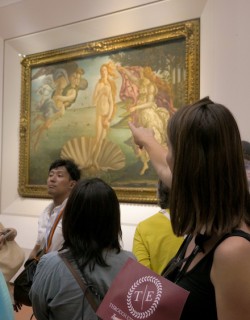Tuscany's colors are as rich and deep as the flavors of the dishes that have originated here. Cities like Siena, Pisa, Lucca, Livorno, and Florence tell distinct stories despite being separated by just a few kilometers. Each boasts its unique soul, reflected not just in its art but also its culinary traditions.
An invisible thread ties them together. Tuscany is steeped in superstition and folklore - something that has been passed down and woven into family recipes for centuries. Many of these dishes have humble, peasant origins - la cucina povera. This philosophy embodies the resourcefulness and creativity of those who once lived off the land. The idea still lives on today in the nonnas and family homes of the region.
Tuscany's delicacies tend to be meat-heavy - from bistecca alla Fiorentina to rustic game and the local Florentine delicacy, tripe. Fish also makes an ocassional appearance, most notably in cacciucco alla livornese.The region's cuisine is also enriched by grains, legumes, and vegetables. No Tuscan table is complete without a generous helping of ribollita, pappa al pomodoro or other amazing seasonal vegetables.
And then there are the sweets. A diabetic love letter could be written to these alone: cantucci, zuccotto, castagnaccio, and panforte. Oh yes!
Tuscany is a culinary powerhouse of Italian food and an absolute staple of any Italian adventure. So let's delve into the dizzying world of Tuscan food and discover more about what to eat and where to eat it below.
The Top 8 Foods to Try in Tuscany
1. Peposo dell’Impruneta
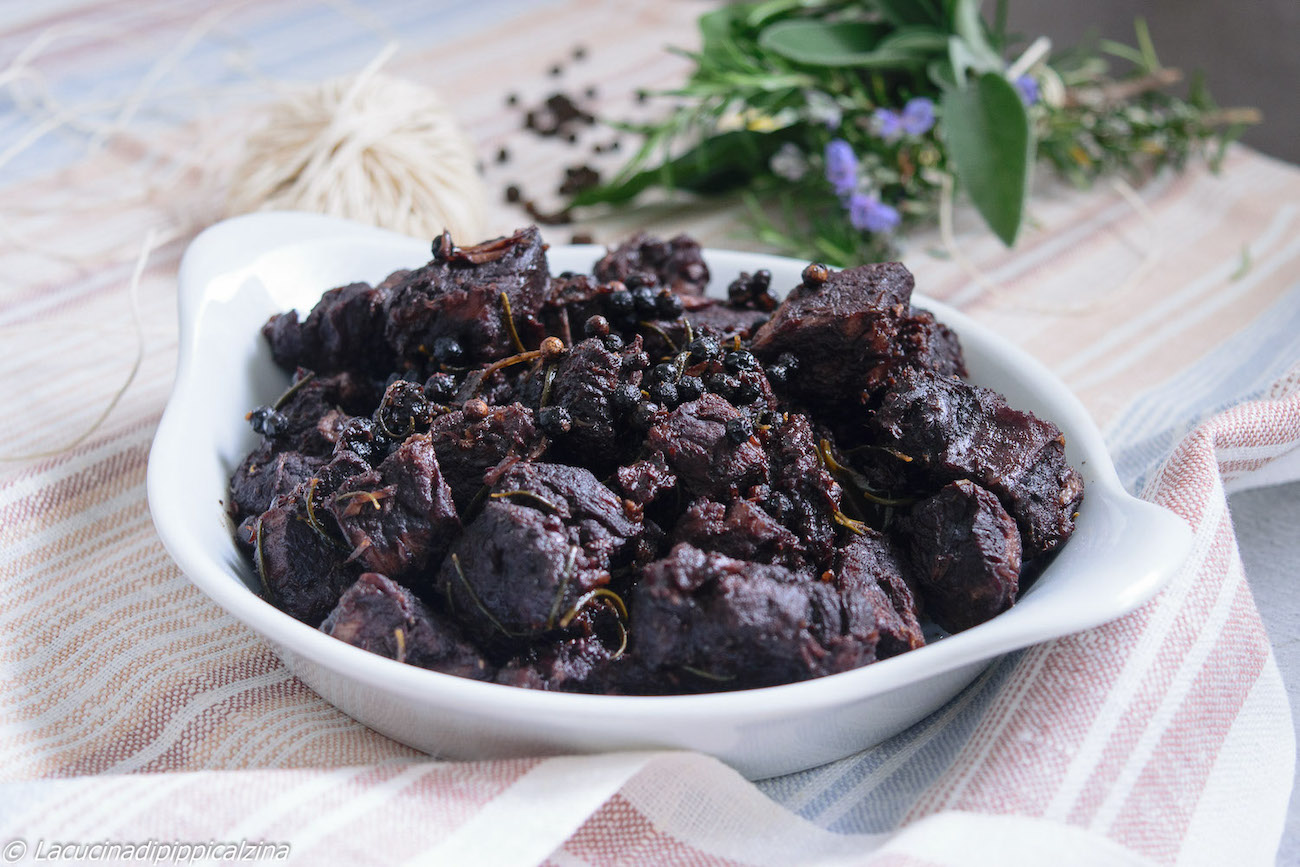
A robust stew of beef slow-cooked in red wine with garlic and black pepper, Peposo—literally meaning "peppery"—traces its origins back to the 15th century or earlier in Impruneta, a small town near Florence renowned for its terracotta kilns. Created by kiln workers, it was a practical dish: they would place a terracotta pot filled with low-grade, often pungent cuts of beef, garlic, pepper, and wine near the kiln's mouth at the start of their shift.
By the late 1400s, artisans working on Brunelleschi's Dome in Florence adopted this method. Brunelleschi permitted the preparation of Peposo in kilns set up at the construction site, creating an affordable "canteen" for workers and discouraging them from wandering to taverns.
Later, in the early 16th century, the tradition continued with workers at the Ospedale del Ceppo in Pistoia, where similar kiln-cooking practices were used. Today, Peposo is still prepared with a recipe close to its original form: made with inexpensive cuts of beef, its slow cooking process transforms the tough meat into a tender, flavourful dish.
2. Castagnaccio
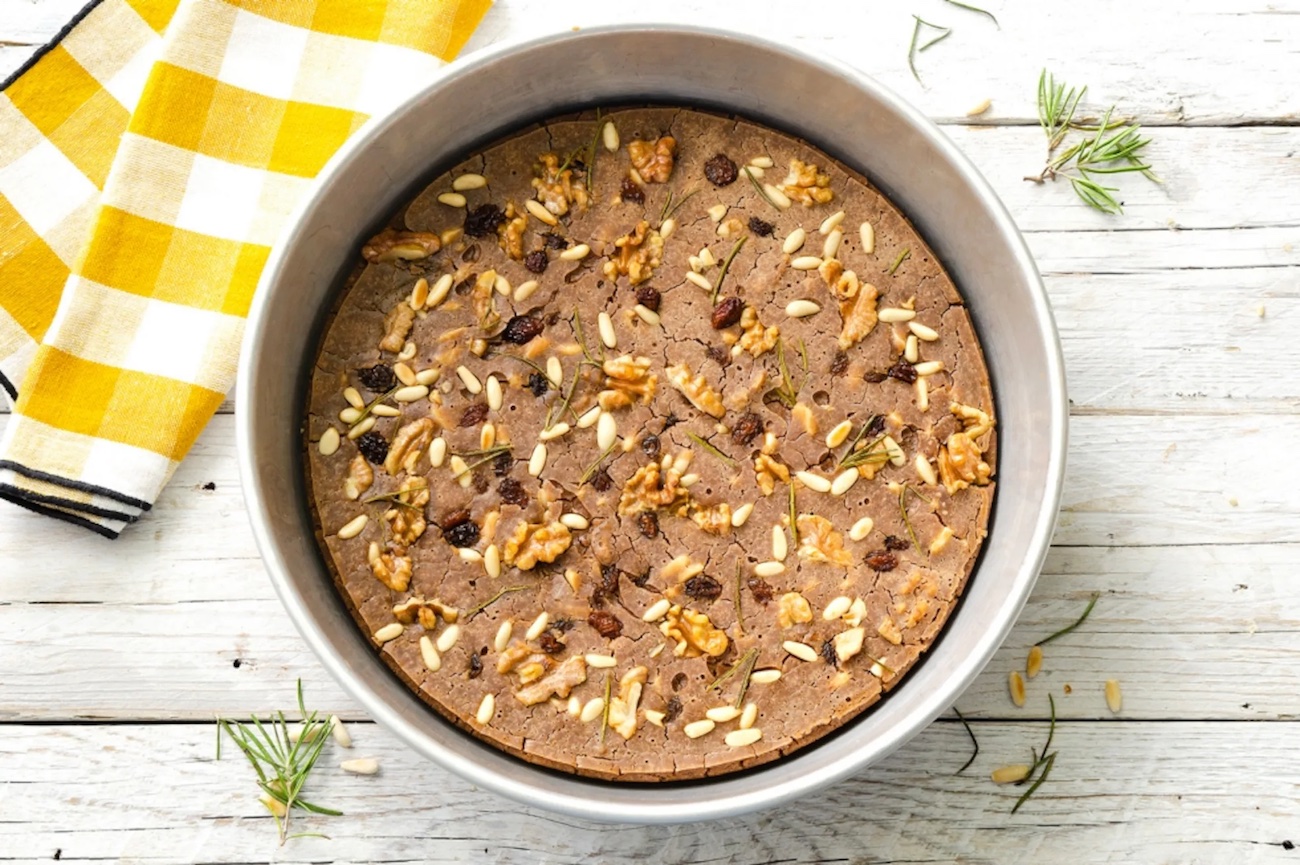
This rustic chestnut flour cake is made with water, olive oil, pine nuts, and raisins and is typically adorned with rosemary sprigs. Traditionally prepared in autumn, when chestnuts are harvested, castagnaccio has a dense texture and an earthy sweetness.
In the past, chestnuts were a staple food for mountain communities, known as “the bread of the poor” because they were plentiful and inexpensive. Women often had to be inventive with chestnuts, creating different dishes to add variety to their meals.
Castagnaccio became a beloved treat, and over time, variations have emerged, including orange zest, fennel seeds, walnuts, or accompaniments like ricotta and honey. Folk tales cast it as an aphrodisiac, with rosemary said to have the power to make the consumer fall in love, inspiring young women to bake it for their admirers. Historical references to the cake date back to the 16th century, with mentions by Ortensio Lando and recipes evolving through the centuries to become a staple of Tuscan cuisine.
3. Cantucci
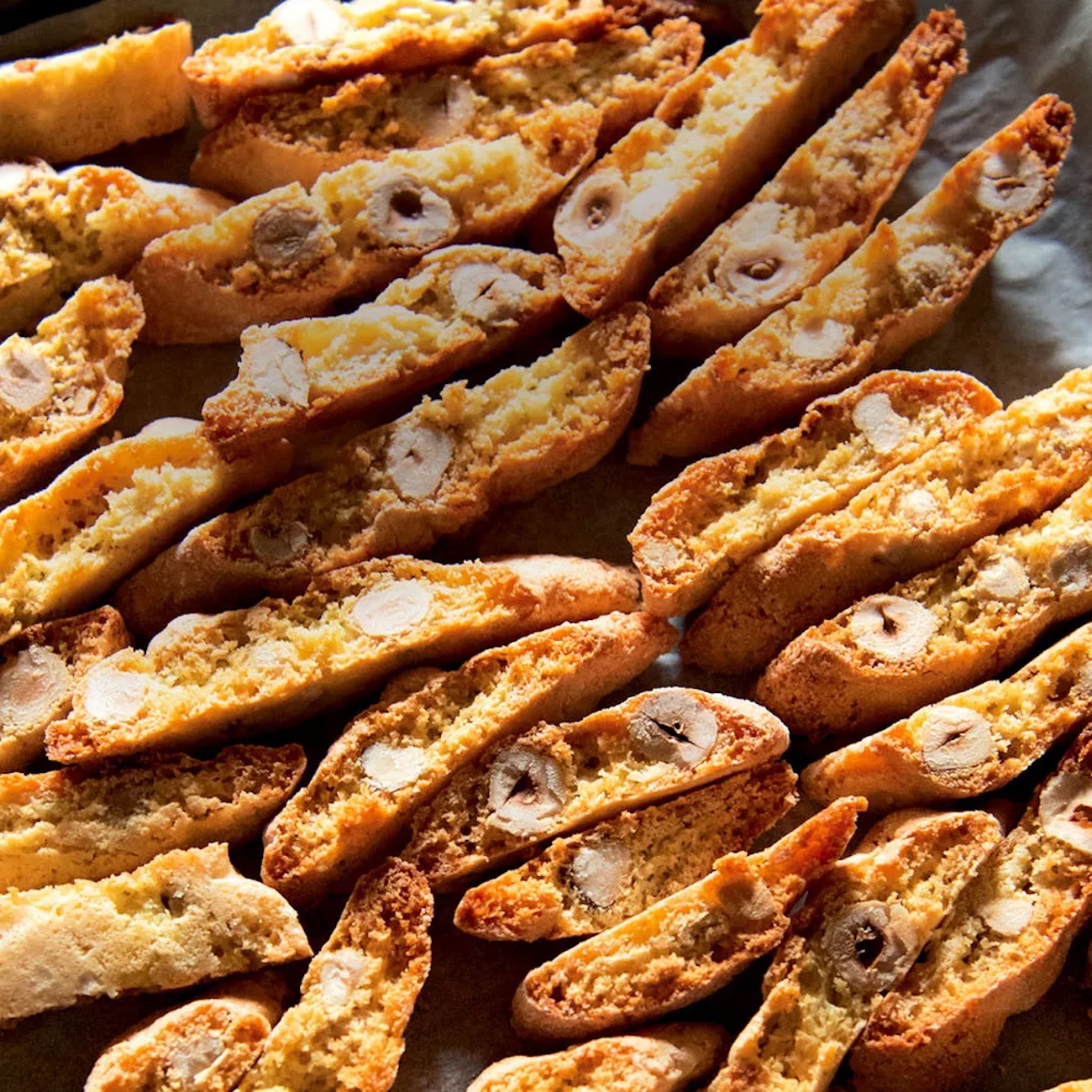
These biscuits, closely tied to the city of Prato, are made with flour, butter, eggs, and whole almonds. Their distinctive shape is achieved by slicing a freshly baked loaf of dough into small pieces, which are then returned to the oven for a second bake to develop their signature crunch.
Traditionally, they are enjoyed dipped in Vin Santo, a sweet dessert wine, making for a delightful post-dinner treat. These beloved treats, often found in households as the quintessential Sunday biscuit (my father still makes a point of buying them on that day), have a history that traces back as far as the 16th century.
The name likely originates from the Latin cantellus, meaning “piece or slice of bread,” reminiscent of a Roman-era salted cracker consumed by soldiers during military campaigns. Another interpretation links the name to canto, meaning “corner” or “small part.”
By the late 1500s, cantucci were served at the Medici court, though almonds had not yet been incorporated into the recipe. The first recorded definition of cantuccio dates back to the 17th-century Accademia della Crusca, while their international debut came in 1867 at the Paris Universal Exposition, where they received widespread acclaim.
4. Pappa al Pomodoro
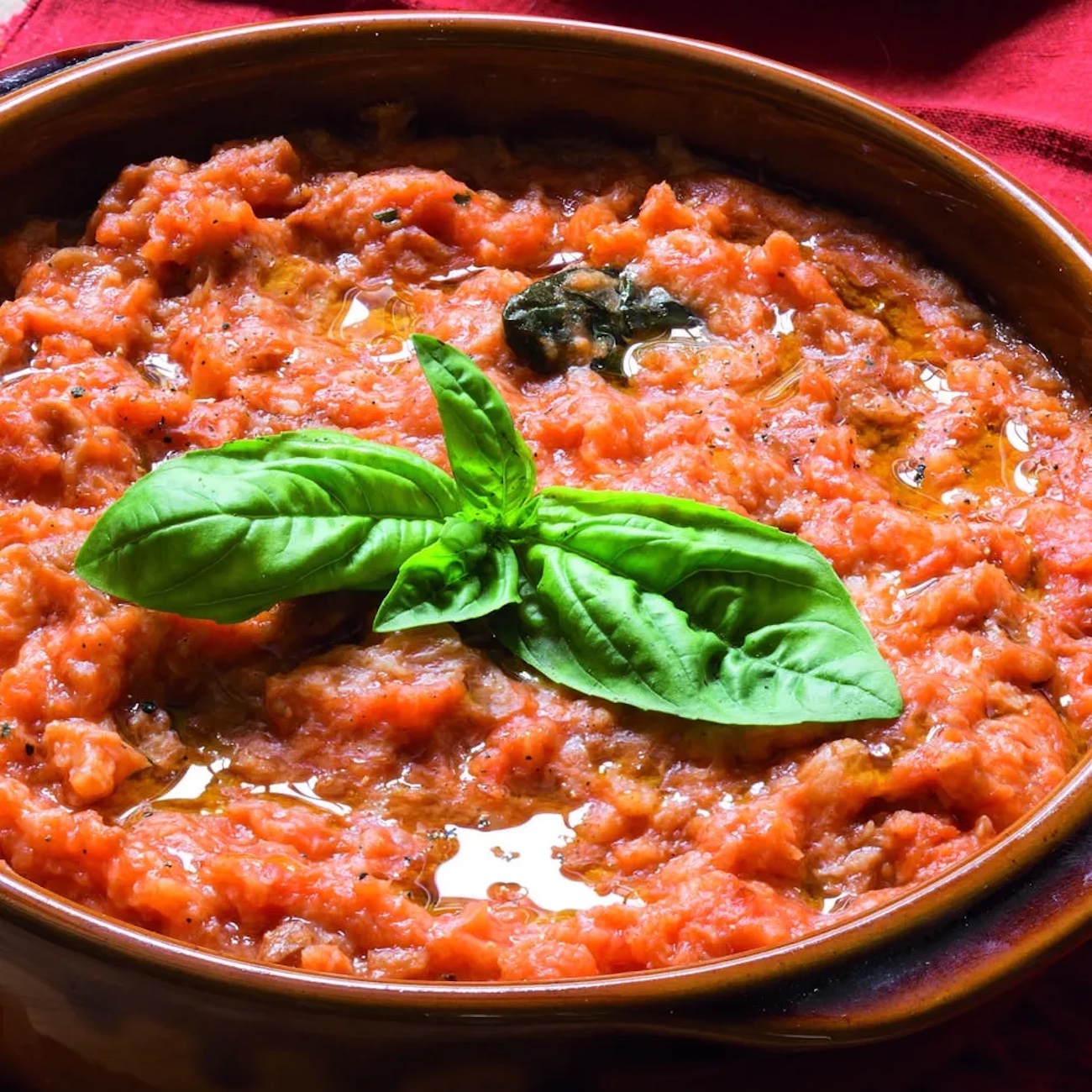
A humble yet iconic dish, pappa al pomodoro embodies the ingenuity of Tuscan peasant cooking. Made with stale bread, tomatoes, olive oil, and basil, it transforms simple ingredients into a hearty, flavourful meal.
The bread must be the saltless Tuscan variety, known as pane sciocco. The name pappa (in English, "mush") likely originates from the Italian word used to teach children how to refer to food in general, evoking the comforting, mushy texture of the dish.
It also hints at its rustic preparation, a mixture of ingredients that forms a soft, satisfying consistency. The dish’s history dates back to the 16th century when tomatoes first arrived in Europe from the Americas and began to make their way into Italian kitchens.
Pappa al pomodoro gained cultural significance much later, thanks to Vamba’s novel Il Giornalino di Gian Burrasca. Its popularity soared in the 1960s with the television adaptation of the book, featuring Rita Pavone’s song Viva la Pappa col Pomodoro, written by film director Lina Wertmüller and scored by composer Nino Rota. This transformed the humble dish into a national symbol of simple, rustic Italian cuisine.
5. Cacciucco alla Livornese
This emblematic dish of Livorno and nearby Viareggio is a robust fish stew made with an assortment of "humble" seafood: octopus, cuttlefish, mantis shrimp, scorpionfish, and other rockfish. Each ingredient is added at just the right time during cooking to ensure the perfect balance of textures and flavours.
The heart of the dish is a rich tomato sauce flavoured with garlic, aromatic herbs, and a touch of red wine, into which the seafood is gently simmered. The stew is traditionally served over slices of toasted Tuscan bread rubbed with garlic, which absorb the intense, briny sauce to create a deeply satisfying dish.
The origins of cacciucco are steeped in legend. One tale recounts that it was invented by impoverished fishermen, who used unsold or less desirable catches to prepare a nourishing, flavourful meal. Another story tells of a widow, left destitute after her fisherman husband’s death, who sought help from her community.
In an act of solidarity, each fisherman contributed a fish, and with these offerings, she prepared what became the first cacciucco. Its name is thought to derive from the Turkish word küçük, meaning "small", a nod to the mix of small fish often used in the recipe. In the 19th century, cacciucco gained literary recognition when Pellegrino Artusi included it in his famous cookbook La Scienza in Cucina e l’Arte di Mangiar Bene, providing its first written version.
6. Trippa alla Fiorentina
A rustic, peasant dish, Trippa alla Fiorentina uses veal offal, once considered waste but now a delicacy. The tripe is slow-cooked in a rich tomato sauce with onions, garlic, celery, carrots, and spices, then topped with Parmesan. Cut into strips and stewed until tender, it offers a comforting texture and deep flavour.
Enjoyed in Florence since the Middle Ages, its popularity is linked to the trippaio, street vendors in markets. An anecdote connects it to Girolamo Savonarola, infamous for his 1497 “Bonfire of the Vanities.” Locals rebelled when he tried to ban tripe and lampredotto sales, contributing to his downfall. Trippa alla Fiorentina also pleased figures like Lorenzo de’ Medici, who shared his love for it with philosopher Pico della Mirandola.
7. Panforte
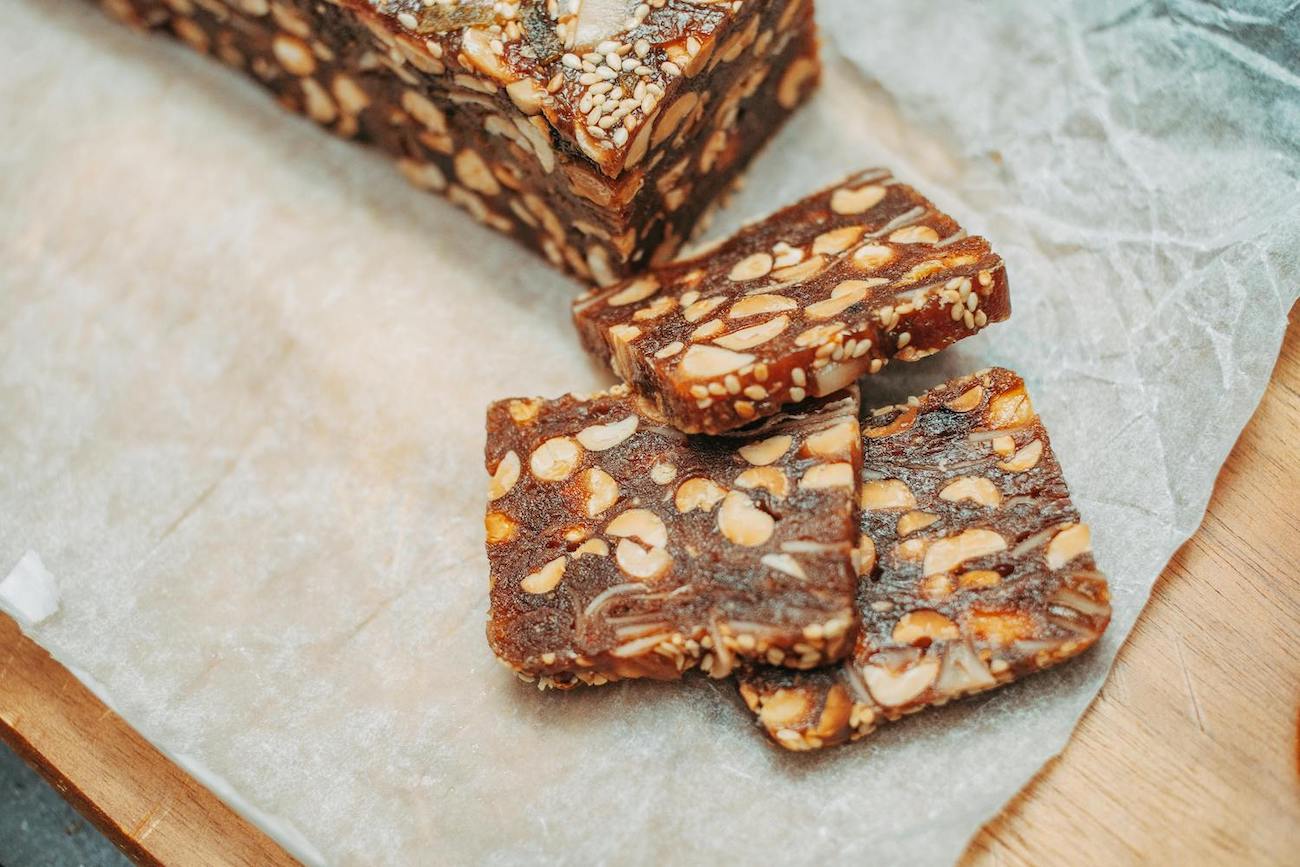
Panforte, meaning "strong bread," is a traditional Sienese Christmas delicacy. Its name comes from its rich combination of spices, dried fruits, and nuts. Originating in the 13th century as "Christmas Bread" or "Aromatic Bread," its development was influenced by the Crusades, which brought spices to Siena.
This transformed panmelato into panpepato, a precursor to modern panforte. Documented as a mix of wheat flour, honey, spices, dried figs, marmalade, pine nuts, and pepper, by 1206, nuns of the Montecelso Monastery received panes piperatos et melatos as tribute, highlighting its value.
8. Panzanella
This dish, from central and coastal Tuscany, transforms stale bread and vegetables into a summer salad. Made with tomatoes, cucumbers, onions, and basil, it’s dressed with olive oil, vinegar, and salt. The saltless Tuscan bread (pane sciocco) is soaked and squeezed before mixing with the vegetables. Soaked onions are considered essential.
Panzanella’s origins are historical and folkloric. Some say it originated on fishing boats, with sailors softening stale bread with seawater. Others credit Tuscan farmers, mixing leftover bread with garden vegetables. A precursor is mentioned in Boccaccio’s Decameron. By the 16th century, Agnolo Bronzino described a similar salad, though without tomatoes, which were later additions.
MORE GREAT CONTENT FROM THE BLOG:
- Everything You Need to Know to Visit Florence in 2024
- The Best Things to Do in Florence in 2024
- Where to Stay in Florence
- The Best Tours of Florence
- The Best Museums in Florence
- What to See in the Uffizi Gallery
- The Best Street Food in Florence
- Where to See Michelangelo in Florence
We hope we’ve whetted your appetite for a foodie visit to Florence! Through Eternity Tours offer a range of insider itineraries in the City of the Medici, so if you’re taking a trip to Florence this year check out our website or get in touch with our expert travel planners today!
